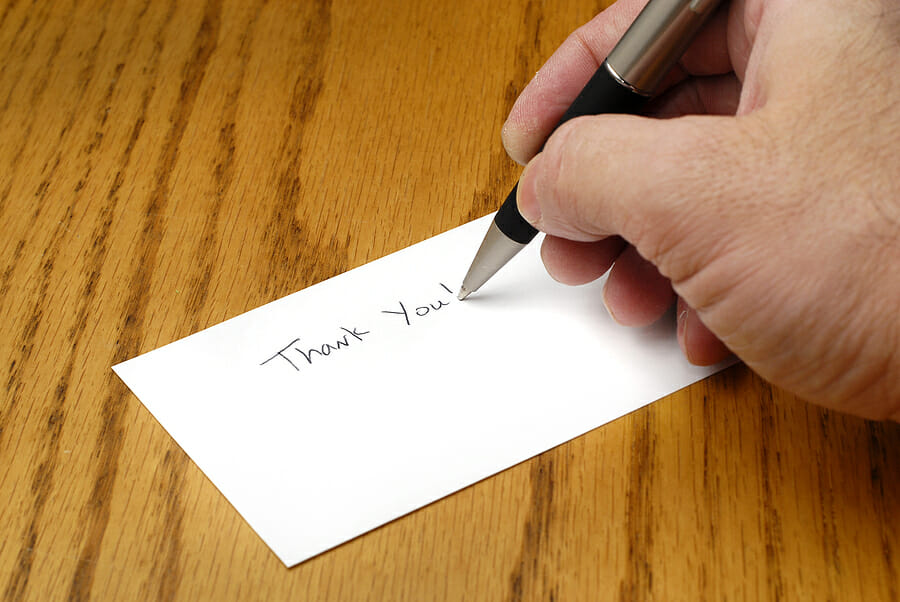Sending a thank-you card is a timeless gesture that never goes out of style. Whether it’s expressing gratitude for a gift, a kind gesture, or simply someone’s presence, a personalised thank-you card can leave a lasting impression. In today’s digital age, where communication often feels fleeting and impersonal, taking the time to send a handwritten note can truly stand out. But what makes a thank-you card truly impactful? Let’s dive into the art of personalised thank you cards and discover some tips for crafting messages that leave a lasting impression on your customers or loved ones.
Why Personalised Thank You Cards Matter
Table of Contents
In a world inundated with emails, text messages, and social media notifications, receiving a handwritten note can feel like a breath of fresh air. Personalised thank-you cards show that you’ve taken the time to express your gratitude thoughtfully. They demonstrate sincerity and appreciation in a way that digital communication simply can’t match. Whether you’re thanking a friend, a colleague, or a family member, a personalised thank-you card can strengthen your relationship and make the recipient feel valued and appreciated.
Tips for Crafting Impactful Messages
1. Start with a Genuine Expression of Gratitude
- Begin your thank-you card by expressing your gratitude sincerely and directly. Let the recipient know why you’re thankful and what their gesture meant to you.
- Example: “Dear \[Recipient’s Name\], I wanted to take a moment to express my heartfelt gratitude for \[specific reason\]. Your kindness and generosity truly meant the world to me.”
2. Be Specific and Detailed
- Personalize your message by mentioning specific details about the gift, gesture, or act of kindness you’re thanking the recipient for. This shows that you’ve paid attention and that their efforts haven’t gone unnoticed.
- Example: “The \[gift/item\] you gave me was absolutely perfect! I’ve already \[used/enjoyed\] it several times, and it brings a smile to my face every time I see it.”
3. Share a Personal Anecdote or Memory
- If appropriate, share a personal anecdote or memory related to the recipient or the occasion. This adds a heartfelt touch to your message and reinforces the connection between you and the recipient.
- Example: “I’ll always cherish the memories we’ve shared together, and your thoughtfulness only adds to those cherished moments.”
4. Look to the Future
- End your thank-you card on a positive note by expressing your excitement for the future and your hopes of staying in touch or seeing the recipient again soon.
- Example: “I’m looking forward to the next time we can \[activity or event\]. Until then, know that your kindness has made a lasting impact on me.”
Dos and Don’ts of Thank You Card Etiquette
Dos:
- Do personalize each thank-you card with the recipient’s name and a heartfelt message.
- Do use high-quality stationery and legible handwriting for a polished and professional appearance.
- Do send thank-you cards promptly, ideally within a week of receiving the gift or gesture.
- Do consider adding a personal touch, such as a small drawing or a favorite quote, to make your thank-you card stand out.
Don’ts:
- Don’t use generic or overly formal language in your thank-you cards. Keep your message genuine and heartfelt.
- Don’t mention the value of the gift or gesture in your thank-you card. Focus on expressing gratitude rather than material worth.
- Don’t wait too long to send a thank-you card. Sending it promptly shows that you value the recipient’s gesture and took the time to acknowledge it.
Frequently Asked Questions About Thank You Cards
Q: Is it necessary to send a thank-you card for every gift or gesture?
A: While it’s not always necessary, sending a thank-you card is a thoughtful way to express gratitude and strengthen relationships.
Q: Should I handwrite my thank-you cards, or is it okay to type them?
A: Handwritten thank-you cards add a personal touch and show that you’ve taken the time to craft a thoughtful message. However, if your handwriting is difficult to read, typing your thank-you cards is acceptable.
Q: What should I do if I receive a gift from someone but don’t know their address to send a thank-you card?
A: In this case, it’s appropriate to send a thank-you message via email or social media. Simply express your gratitude sincerely and let the sender know that you appreciate their gesture.
Conclusion
Sending personalized thank-you cards is an art form that allows you to express gratitude sincerely and thoughtfully. By following these tips and guidelines, you can craft messages that leave a lasting impression and strengthen your relationships with friends, family, customers, and colleagues. So, the next time you want to express your appreciation, reach for a pen and paper and let your heartfelt words do the talking.
Image Source: BigStockPhoto.com (Licensed)
Related Categories: Gifts, Reviews








